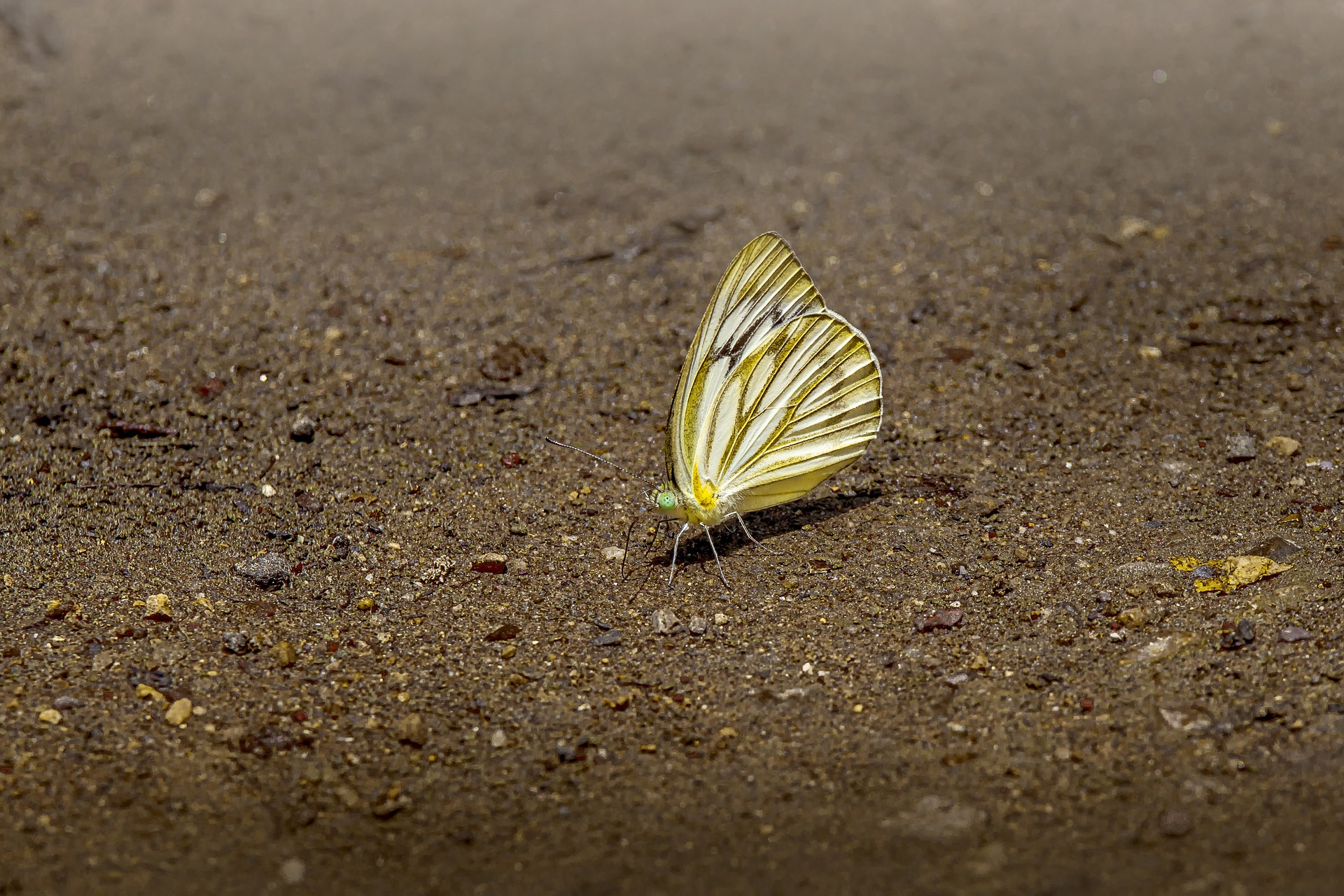The Common Gull (Cepora nerissa), also known as the Lesser Gull, is a butterfly belonging to the family Pieridae, which includes many white and yellow butterflies. It is found across South and Southeast Asia, where it is commonly seen fluttering in gardens, forests, and fields. The species is appreciated for its delicate and striking color patterns, with a prominent white base contrasting with black and yellow markings.
Physical Description:
- Size: The Common Gull is a medium-sized butterfly, with a wingspan ranging from 50 to 60 mm.
- Coloration:
- Males: The upper side of the wings is predominantly white with dark, blackish markings along the edges. The forewings feature distinctive black spots, while the hindwings have a faint dusting of gray or black along the outer edges.
- Females: The females have more pronounced dark markings and, at times, a slightly yellowish tint on the wings. Like the males, they have black spots on the forewings and lighter markings on the hindwings.
- Underside: The underside of the wings is pale yellow or greenish-yellow with fine brownish veins. This coloration helps with camouflage when the butterfly is at rest.
Behavior:
- Flight: The Common Gull is an active flier with a fluttery, erratic flight pattern. It can often be seen flying close to the ground in search of nectar or mates, especially in sunny, open areas.
- Feeding: Adults feed on nectar from a variety of flowering plants. They are often seen visiting gardens, parks, and open forest clearings, sipping nectar from flowers such as lantana, ixora, and other brightly colored blossoms.
- Mud-puddling: Like many butterflies, the males engage in mud-puddling, gathering on moist soil or along riverbanks to extract essential salts and minerals. This behavior is important for their reproductive success, as the minerals obtained are passed on to the females during mating.
Habitat:
The Common Gull is found in a variety of habitats, including:
- Forests and woodland clearings: Prefers sunny areas at the edges of forests or within clearings where flowers are abundant.
- Open grasslands and fields: It is often seen flying low over grassy meadows in search of nectar sources.
- Gardens and parks: The butterfly is a common sight in cultivated gardens and parks, especially in areas with abundant flowers.
Distribution:
The Common Gull is widely distributed across South and Southeast Asia. It is found in countries such as:
- India: Particularly in the southern and northeastern regions.
- Sri Lanka: Throughout the island in various habitats.
- Bangladesh: Common in both rural and urban areas.
- Southeast Asia: Including Thailand, Malaysia, Singapore, and parts of Indonesia.
Reproduction and Life Cycle:
- Eggs: Females lay tiny, pale eggs singly on the leaves of host plants, usually from the Capparaceae family, including species of Capparis.
- Caterpillars: The larvae are green with fine white or yellowish stripes running along their bodies. They feed on the leaves of the host plants, where their color provides excellent camouflage.
- Pupation: After several molts, the caterpillar pupates, forming a green or brown chrysalis that is well camouflaged against the surrounding vegetation. The pupal stage lasts for about 10 to 14 days, after which the adult butterfly emerges.
- Adult Emergence: Adults usually emerge in the morning, quickly drying their wings before taking flight to begin their life cycle anew.
Conservation Status:
The Common Gull is not considered to be under any immediate threat and is classified as Least Concern by the IUCN. Its wide distribution and adaptability to different habitats ensure that its populations remain stable. However, like many other butterfly species, it faces challenges from habitat loss, urbanization, and the use of pesticides.
Interesting Facts:
- Coloration Variability: The intensity of the yellow and black markings can vary between individuals, often depending on factors like location, season, and environmental conditions.
- Migration: While not a long-distance migrant, the Common Gull may move between different altitudes or regions in response to seasonal changes, particularly during the dry and wet seasons in its range.
- Batesian Mimicry: The butterfly’s coloration serves as a form of Batesian mimicry, where it mimics the appearance of more toxic or unpalatable species to deter predators.
Ecological Role:
The Common Gull, like many butterflies, plays an important role in pollination. As it moves from flower to flower feeding on nectar, it helps in the cross-pollination of plants, contributing to the reproductive success of many species of wildflowers. The larvae also serve as food for various predators, including birds and small mammals, thus contributing to the ecosystem’s food web.
Conclusion:
The Common Gull (Cepora nerissa) is a beautiful and widely distributed butterfly species across South and Southeast Asia. Its delicate, striking coloration and active flight make it a familiar sight in gardens, forests, and open fields. With its strong adaptation to a variety of habitats, this butterfly continues to thrive in both wild and urbanized environments, playing a vital role as a pollinator and a component of local ecosystems.
Views: 1520
Subscribe to the newsletter:
